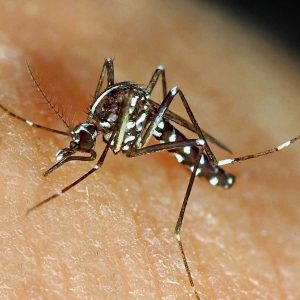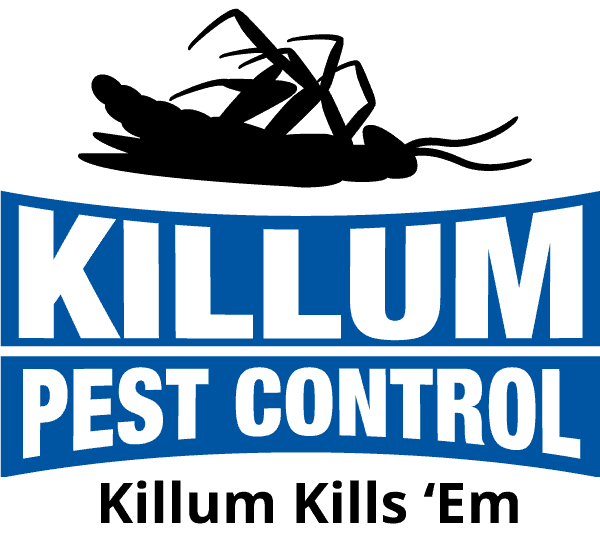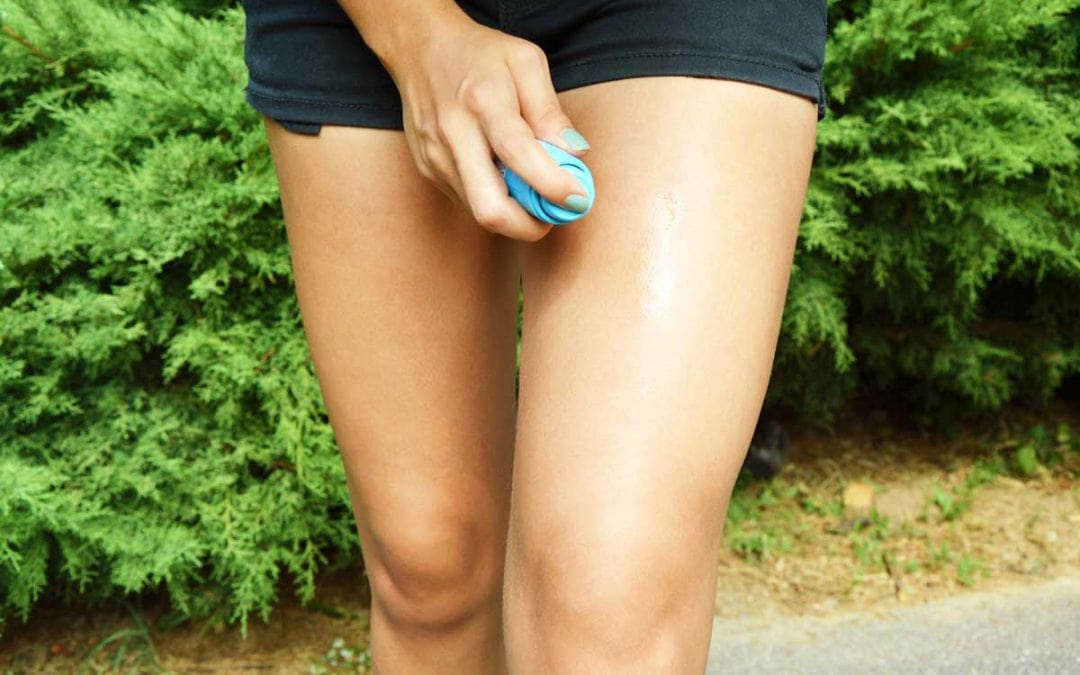Mosquito season in Texas can be particularly severe, with many mosquitoes present during the warm and humid months of the year, typically beginning in the spring, around February, and lasting until November. As temperatures rise, the mosquito population increases and becomes more active. Let’s take a look at the most common mosquito types of mosquitoes in our area.
For the most part, we just call them all ‘mosquitoes’. But there are several different types of mosquitoes that plague us in the Houston area.
Yellow Fever Mosquito


The Yellow Fever Mosquito (Aedes Aegypti) is a small, black mosquito with distinctive white markings on its legs and abdomen. It is known for being a carrier and vector for several dangerous diseases, including Yellow Fever, Dengue, Chikungunya, and Zika virus, among others. It primarily feeds on the blood of humans, though it can also bite other mammals and birds. Female mosquitoes require blood meals for egg production, while males generally feed on plant nectar.
Yellow Fever Mosquitoes are most active during the day, with peak biting times occurring in the early morning and late afternoon. They breed in water and water-holding containers, such as discarded tires, flower pots, and water storage containers. The larvae develop rapidly in water, and the adult mosquitoes typically have a life span of 2 to 4 weeks.
Asian Tiger Mosquito

The Asian Tiger Mosquito (Aedes Albopictus) is a small mosquito native to Southeast Asia. Notable for its distinctive appearance, which consists of black color and white stripes on its body. The unique markings on the Asian Tiger Mosquito have earned it the “tiger” reference and made it easily identifiable.
One of the primary concerns surrounding the Asian Tiger Mosquito is the species’ ability to transmit several viral pathogens, such as Dengue, Chikungunya, and Zika virus, as well as other encephalitis-causing viruses. It can transmit these diseases to humans, other mammals, and occasionally birds through their bite. Similar to the Yellow Fever Mosquito, this species is an aggressive day-biter with peak biting times occurring during the early morning and late afternoon.
The Asian TIger Mosquito is a hardy species that can survive in a variety of climates and temperatures. It is more cold-tolerant than the Yellow Fever Mosquito, which has allowed it to spread into temperate regions. Furthermore, the Asian Tiger Mosquito has the unique ability to undergo diapause, a period of arrested development that allows the mosquito’s eggs to survive cold temperatures and unfavorable conditions. This further enhances its ability to expand its range and adapt to new environments.
Other prominent mosquitoes in Texas during the mosquito season include:
Southern House Mosquito
This species is known to transmit the West Nile virus, which can cause fever, headache, and body aches, and in severe cases, can lead to diseases like meningitis.
Western Encephalitis Mosquito
As the name suggests, this species can transmit the Western equine encephalitis virus, which can cause inflammation of the brain and can be fatal in severe cases. Symptoms include fever, headache, vomiting, and seizures.
Preventing Mosquito Infestation around Your Property
Mosquitoes are a common problem, but the good news is that there are steps to prevent mosquito infestation around your property. Here are some tips:
Preventing and Reducing the Impact of Mosquitoes
Mosquitoes breed in stagnant water, so you must eliminate any standing water around your property. Empty buckets, flower pots, and other outdoor containers can collect water. Clean out gutters and drains regularly to prevent water accumulation.
Use Mosquito Repellents
Use mosquito repellents outdoors, especially during the early morning and late afternoon when mosquitoes are most active.
Install Window Screens
You should install screens on all windows and doors to prevent mosquitoes from entering your home. Repair any holes or tears in existing screens.
Use Mosquito Nets
Use mosquito nets over your bed if you live in an area with a high risk of mosquito-borne diseases. This is especially important if you have infants or young children.
Use Mosquito Traps
Use mosquito traps to reduce the number of mosquitoes around your property. These traps use UV light or carbon dioxide to attract and capture mosquitoes.
Hiring a Pest Control Service
If you cannot handle a mosquito infestation alone, you can hire a pest control service to help you. A professional pest control service will have the tools and expertise to eliminate mosquitoes from your property. They may use a combination of insecticides, mosquito traps, and larvicide treatments to control and eliminate the mosquito population effectively.
Mosquitoes are a potentially dangerous pests, but many ways exist to prevent and control their population. It will be time and labor-consuming, but the methods outlined above are more than enough to help. Whatever route you choose, you can look forward to a mosquito-free outdoor space and a lower risk of mosquito-borne illnesses.
Killum Pest Control, Inc. provides top-quality services for mosquito pest control. Our professional pest control specialists use safe methods for residential and commercial settings to ensure pests are






